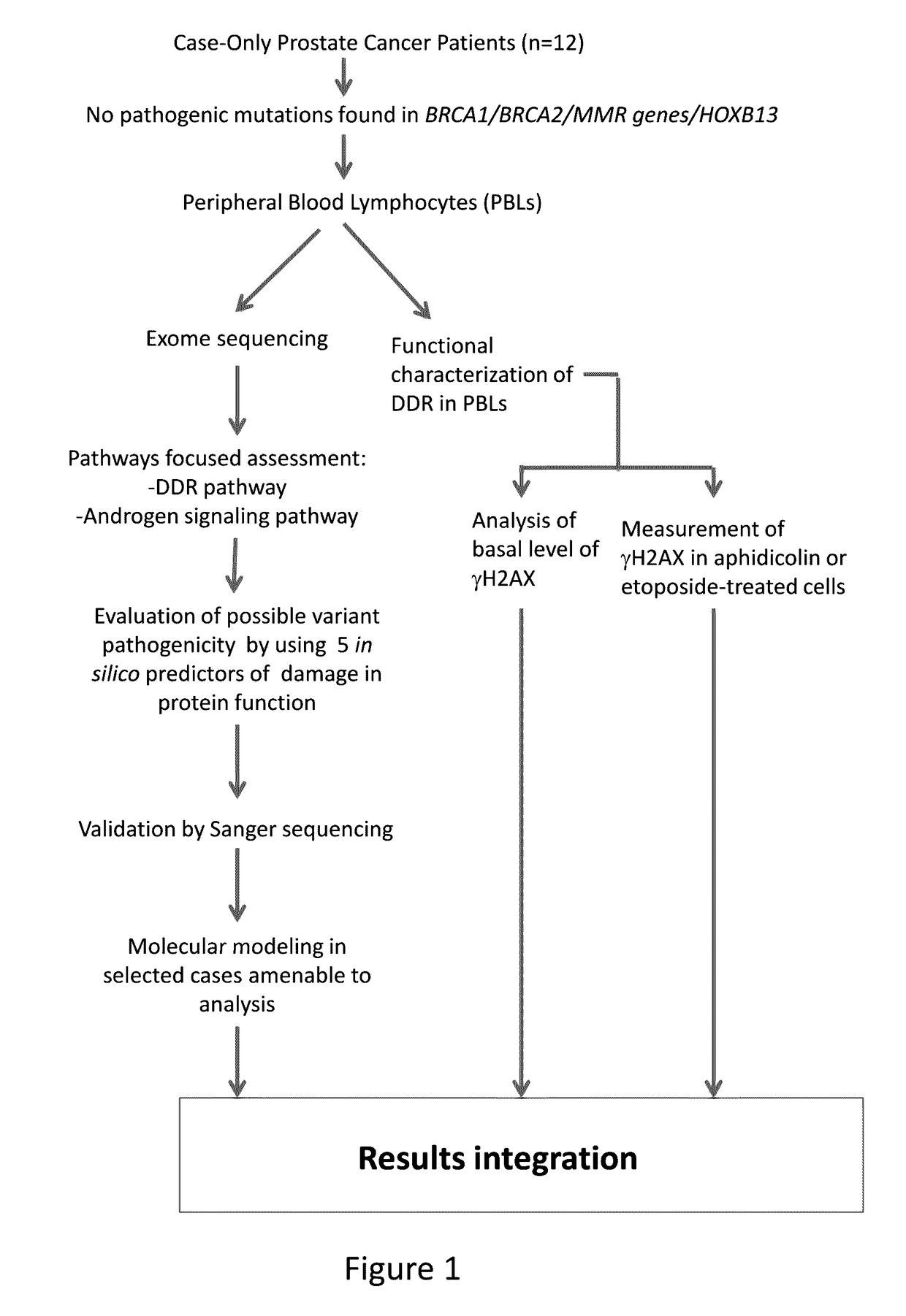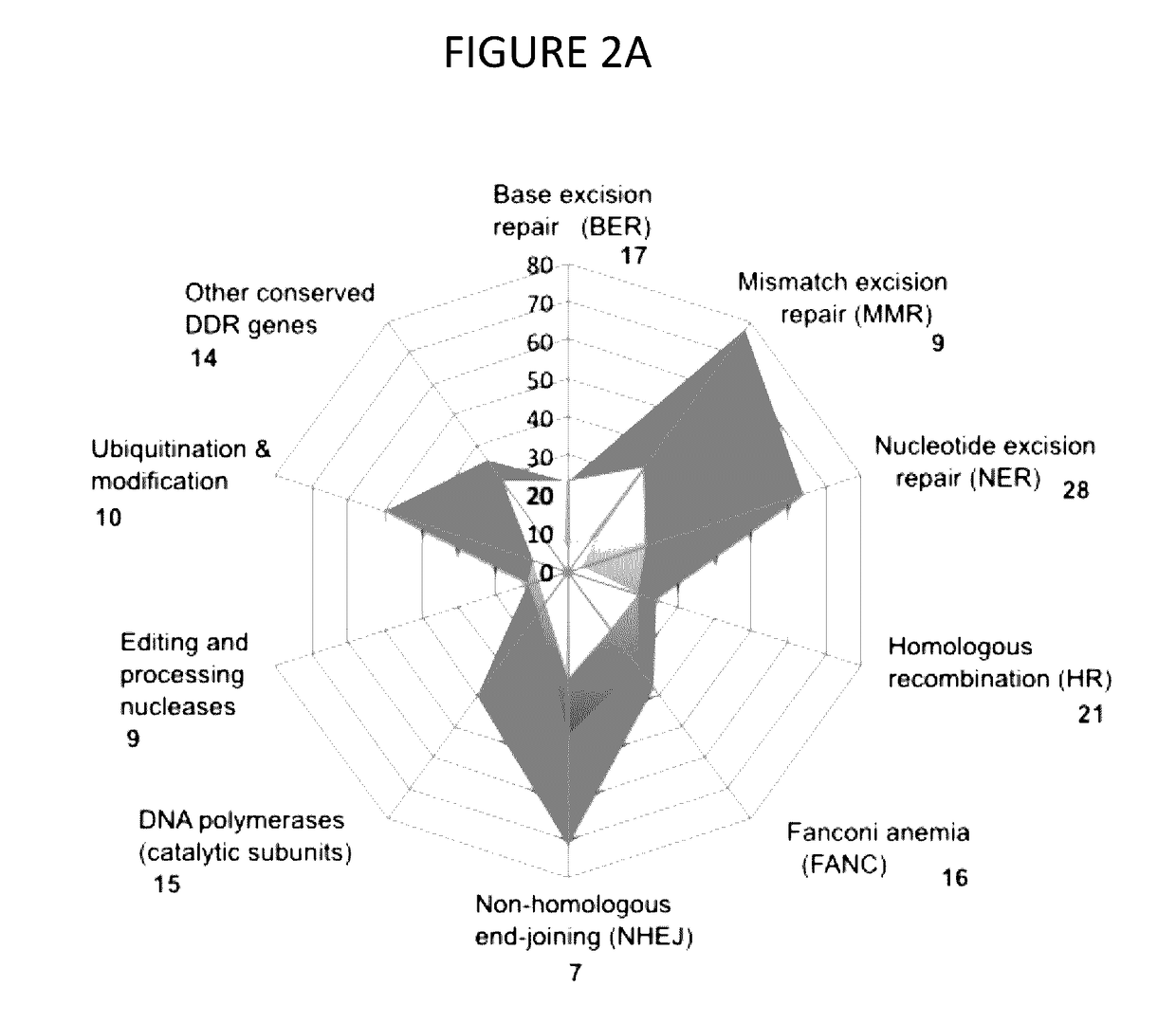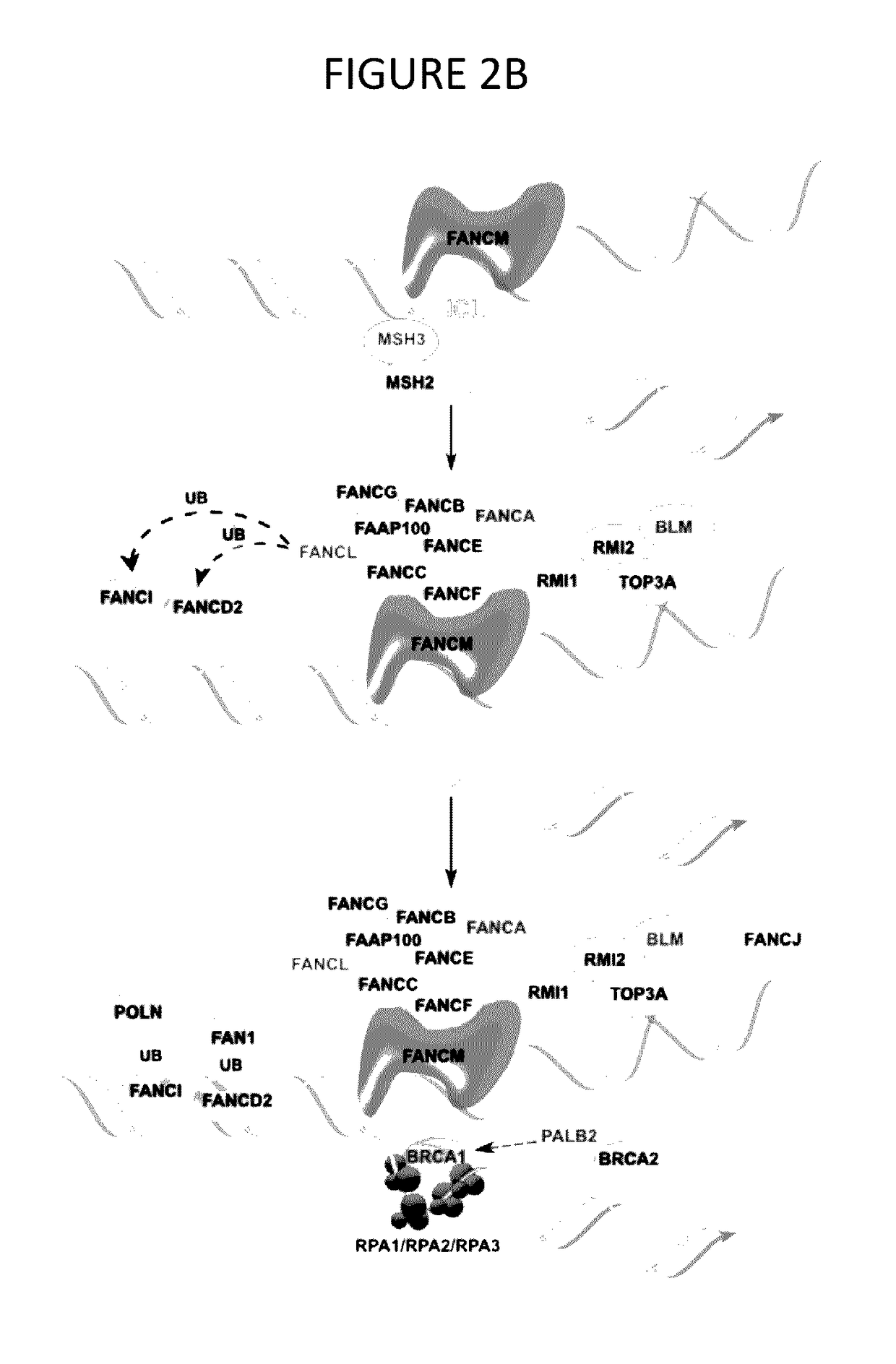Systems and methods for treating patients having a genetic predisposition to develop prostate cancer
- Summary
- Abstract
- Description
- Claims
- Application Information
AI Technical Summary
Benefits of technology
Problems solved by technology
Method used
Image
Examples
example 1
Materials and Methods
[0056]Patient Selection.
[0057]Case-only prostate cancer patients included in this study (n=12) had undergone evaluation for inherited cancer risk. These patients had family cancer history meeting criteria for specific hereditary cancer syndromes with no mutations detected in the corresponding genes. Hereditary cancer syndromes evaluated in these families included hereditary breast-ovarian cancer (HBOC), Lynch syndrome (LS), and hereditary prostate cancer (HPC). No pathogenic mutations were identified from sequencing the following genes (BRCA1, BRCA2, MLH1, MSH2, PMS2, MSH6, and HOXB13). These patients had consented to the in-house Risk Assessment Program Registry, which allowed further research genomic sequencing. All patients reported being white, non-Hispanic. Peripheral blood DNA from these 12 prostate cancer patients was sent for exome sequencing.
[0058]Exome Sequencing.
[0059]Exome sequencing of germline DNA was performed at 30× average coverage using a VCRom...
example 2
Results
[0071]Patient Cohort.
[0072]Patient and family cancer characteristics of 12 unrelated participants with prostate cancer undergoing exome analysis are shown in Table 2. The mean age at prostate cancer diagnosis was 57.8 years (range 41-68 years). Fifty-eight percent had Gleason score>=7, and 25% had advanced stage disease (T3). Each participant had a strong family cancer history, with either multiple first-degree or second-degree relatives with prostate or other cancers.
TABLE 2Family history and prostate cancer characteristics of analyzed prostate cancer patients.PatientAge at1st degree relatives with cancer2nd degree relatives with cancerIDdiagnosisStage / GleasonType of cancer / ageType of cancer / age11294068T2aN0MX / 3 + 4 = 7sister-ovary 27 and colon 66sister-abdominal cancer early60'sbrother-prostate 59mother-brain 52father-unknown cancer11719768T3bN0MX / 4 + 3 = 7mother-stomach 80, colon 95nephew-non Hodgkin's 20'smaternal uncle-unknown cancermaternal grandmother-colon 69paternal ...
example 3
SUMMARY
[0098]With the growing availability of powerful technologies for genomic analysis, risk assessment is reaching an inflection point. In this disclosure, efforts were focused on the analysis of defects in DDR in individuals with family risk factors for prostate cancer. This approach identified variants or variant combinations in almost every patient assessed that have the potential to alter response to DNA damage, with findings further supported by direct demonstration of elevated expression of γH2AX following administration of DNA damaging stimuli. In the group of patients examined, variants often occurred in combinations that would be predicted to interact to weaken DDR and, typically, each variant was idiopathic to the individuals investigated.
[0099]The disclosure also identified non-rare variants affecting DDR. For example, in the cohort analyzed here, 33% of patients had the same non-rare p.Q356R variant in BRCA1, instead of the expected 9%. BRCA1 p.Q356R is a rare example...
PUM
 Login to View More
Login to View More Abstract
Description
Claims
Application Information
 Login to View More
Login to View More - R&D
- Intellectual Property
- Life Sciences
- Materials
- Tech Scout
- Unparalleled Data Quality
- Higher Quality Content
- 60% Fewer Hallucinations
Browse by: Latest US Patents, China's latest patents, Technical Efficacy Thesaurus, Application Domain, Technology Topic, Popular Technical Reports.
© 2025 PatSnap. All rights reserved.Legal|Privacy policy|Modern Slavery Act Transparency Statement|Sitemap|About US| Contact US: help@patsnap.com



